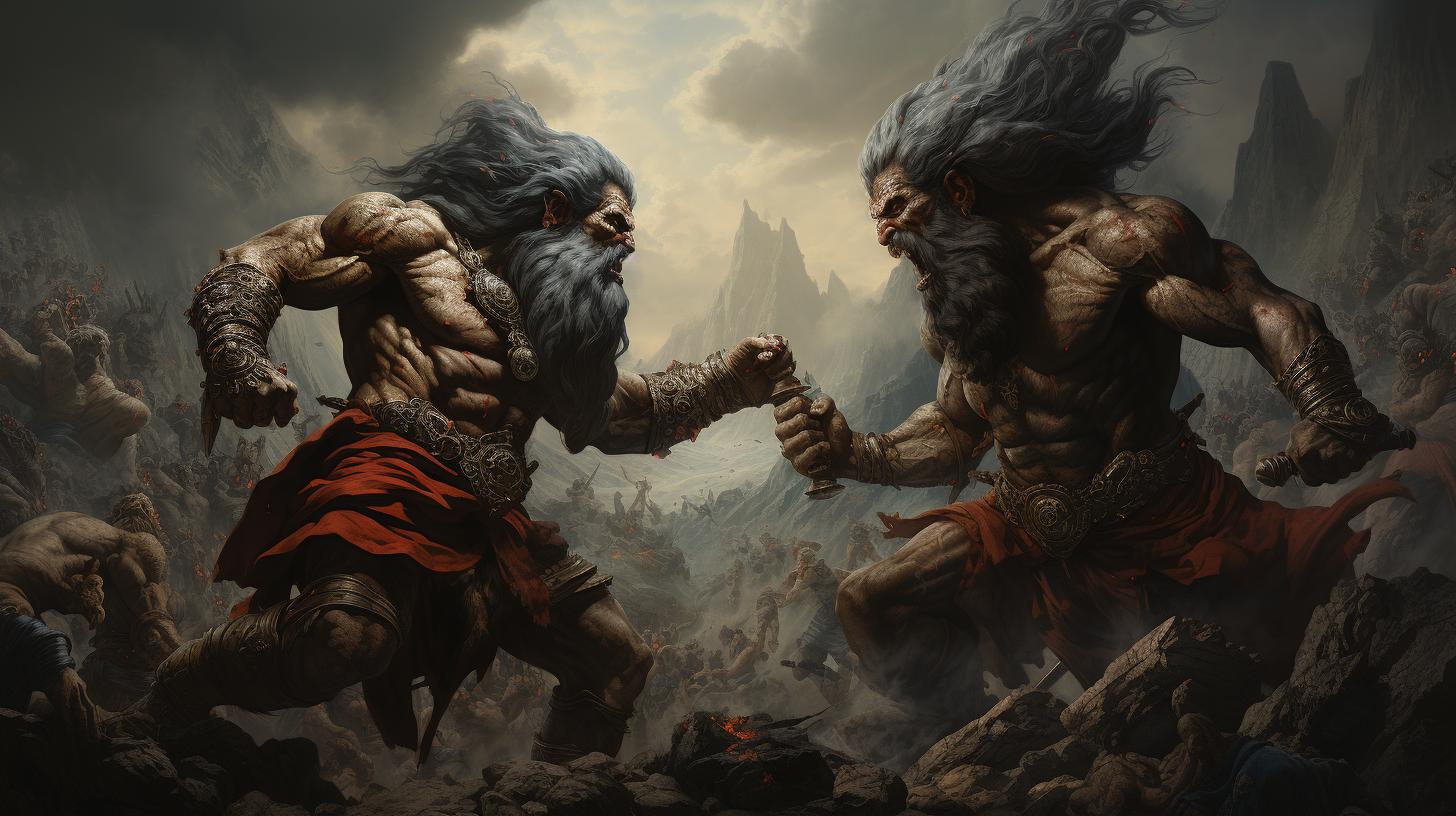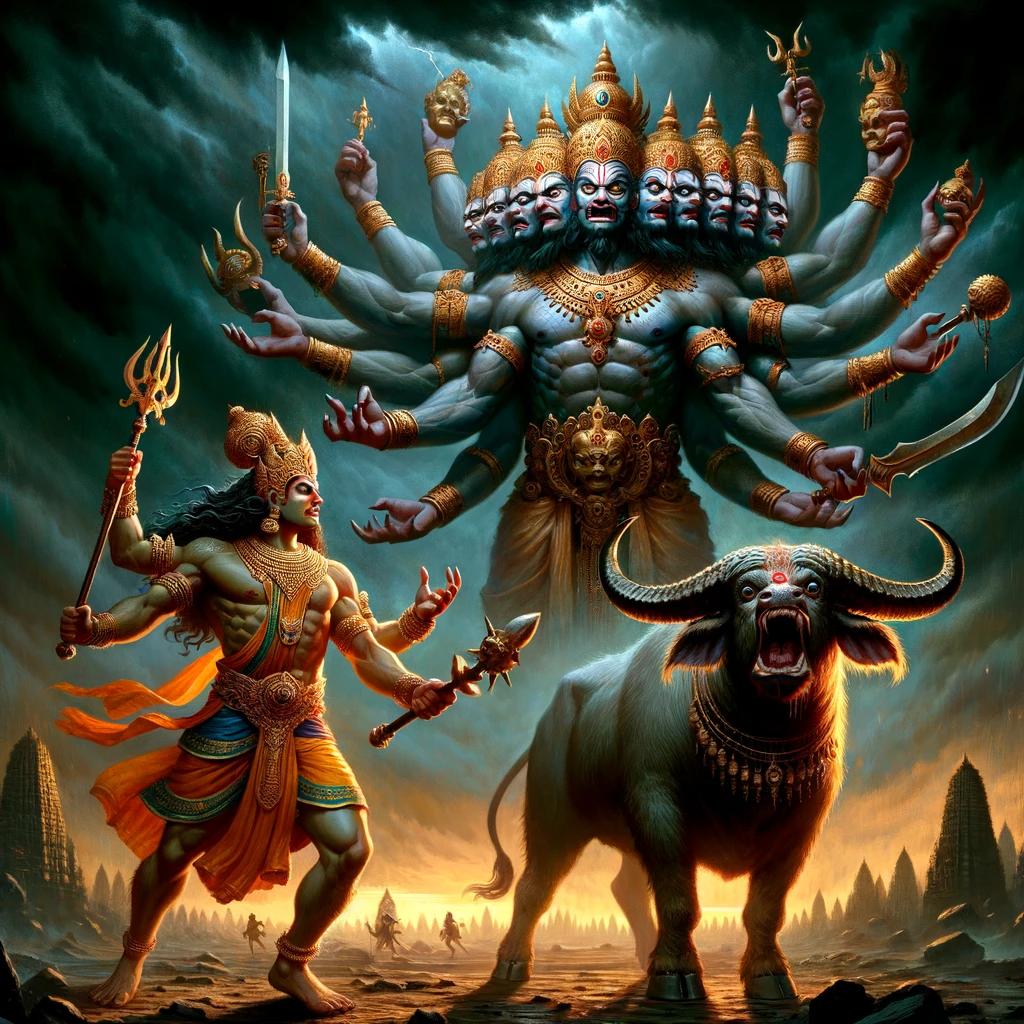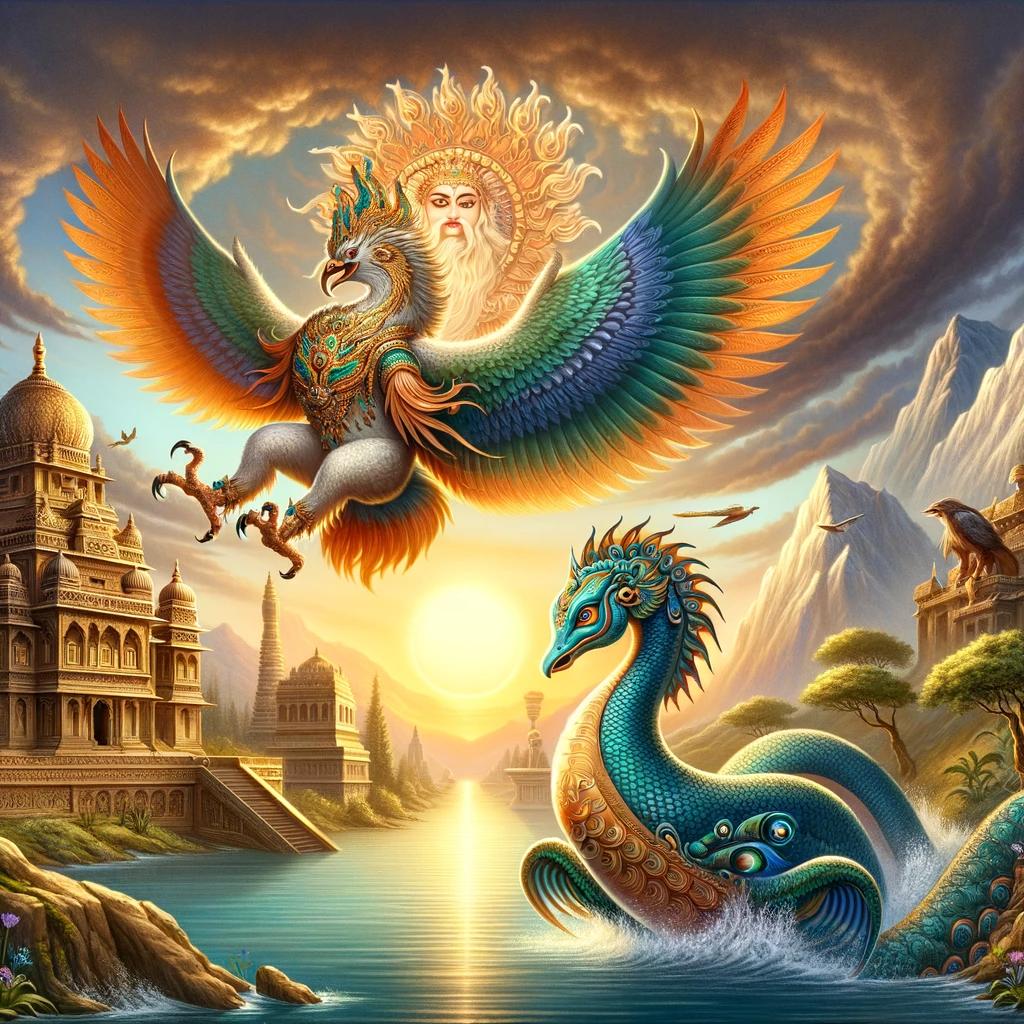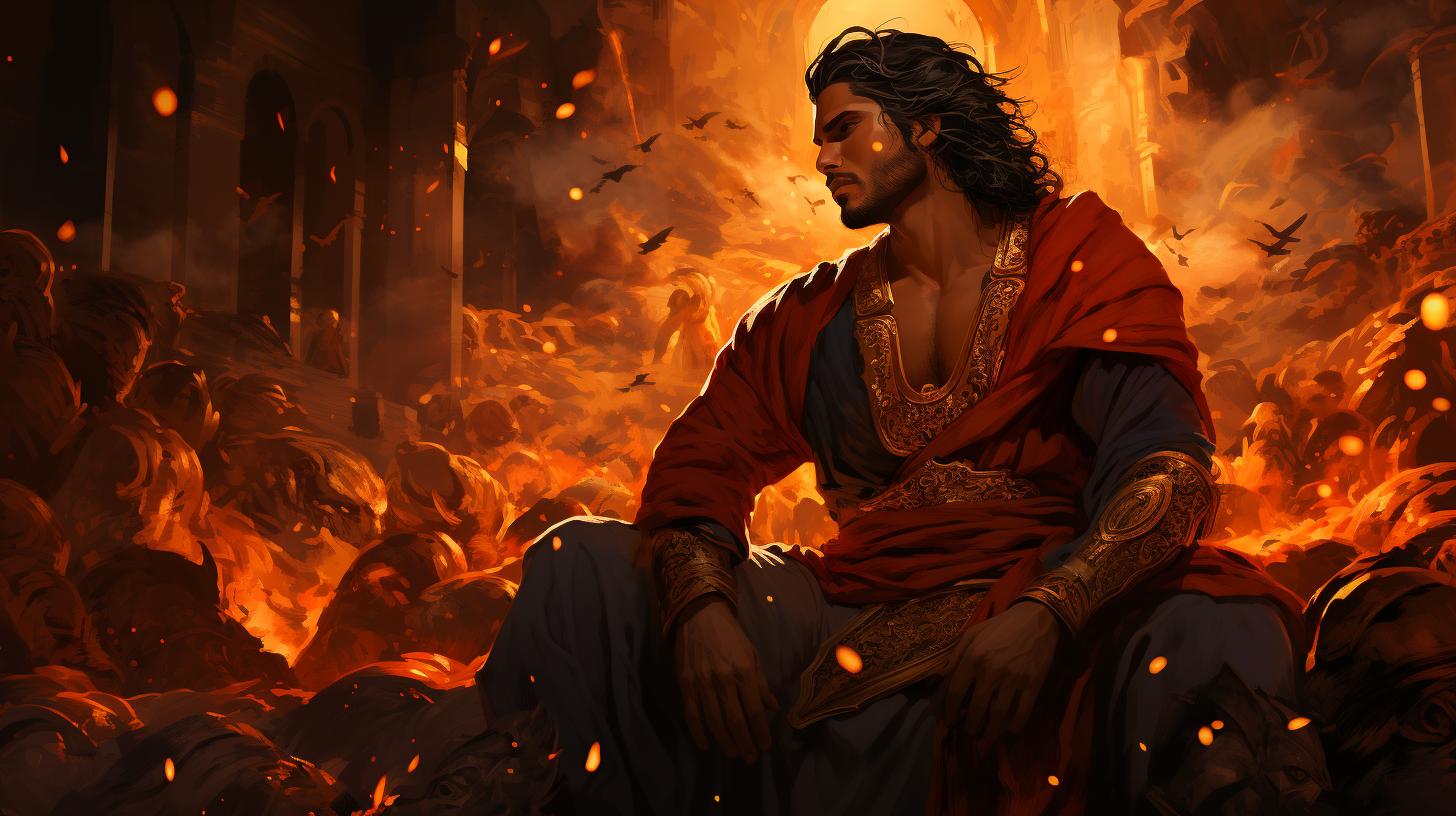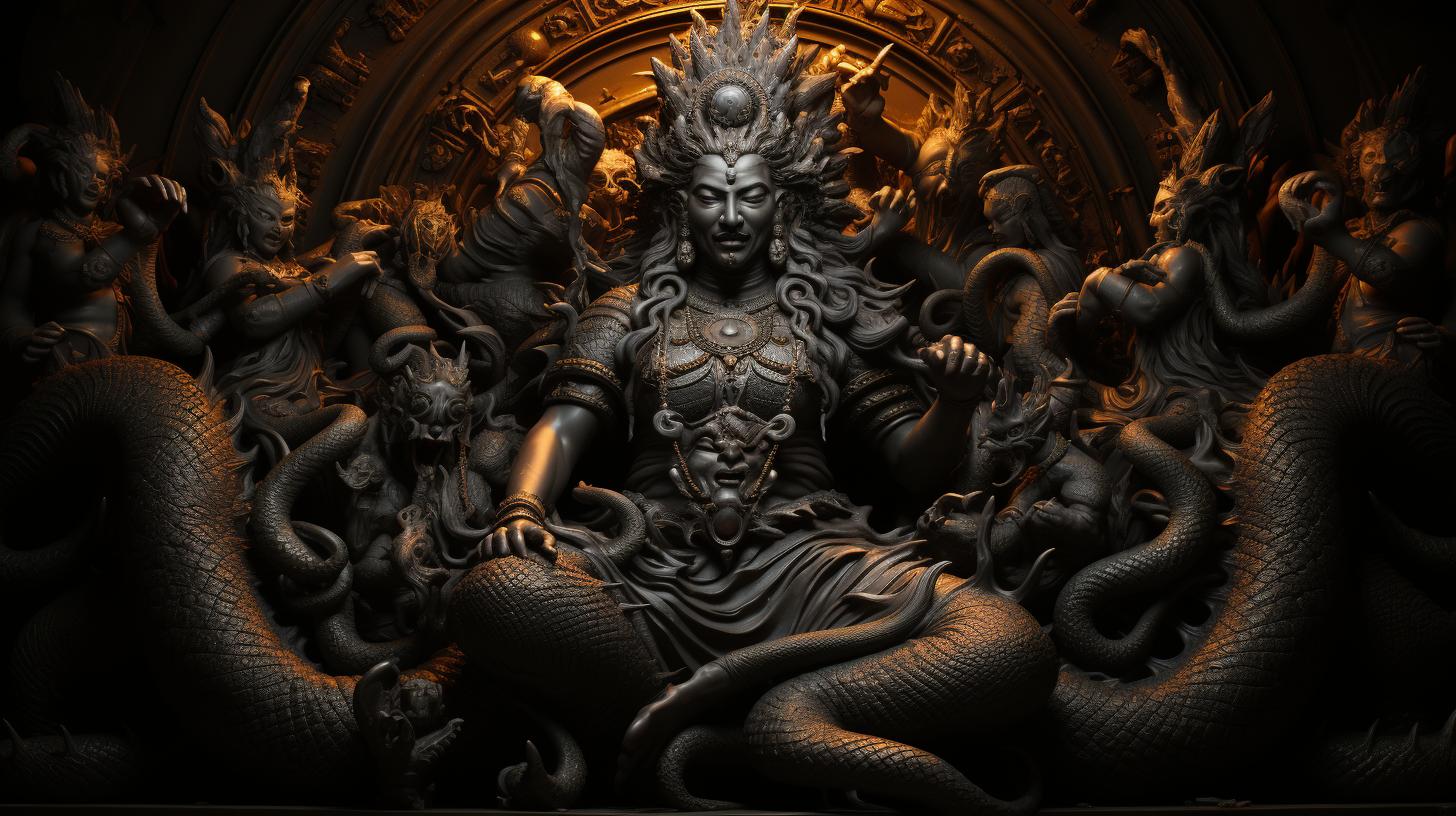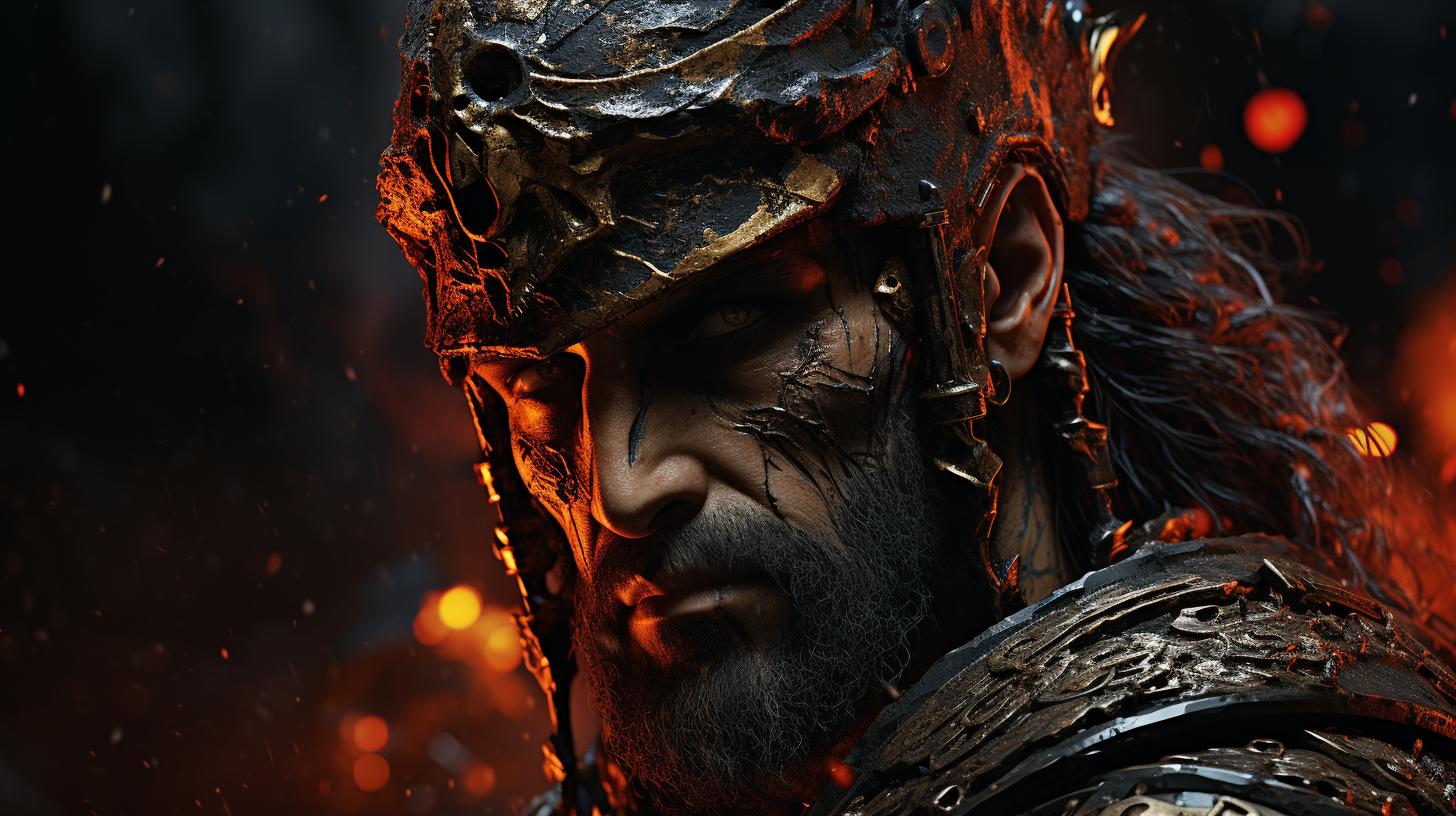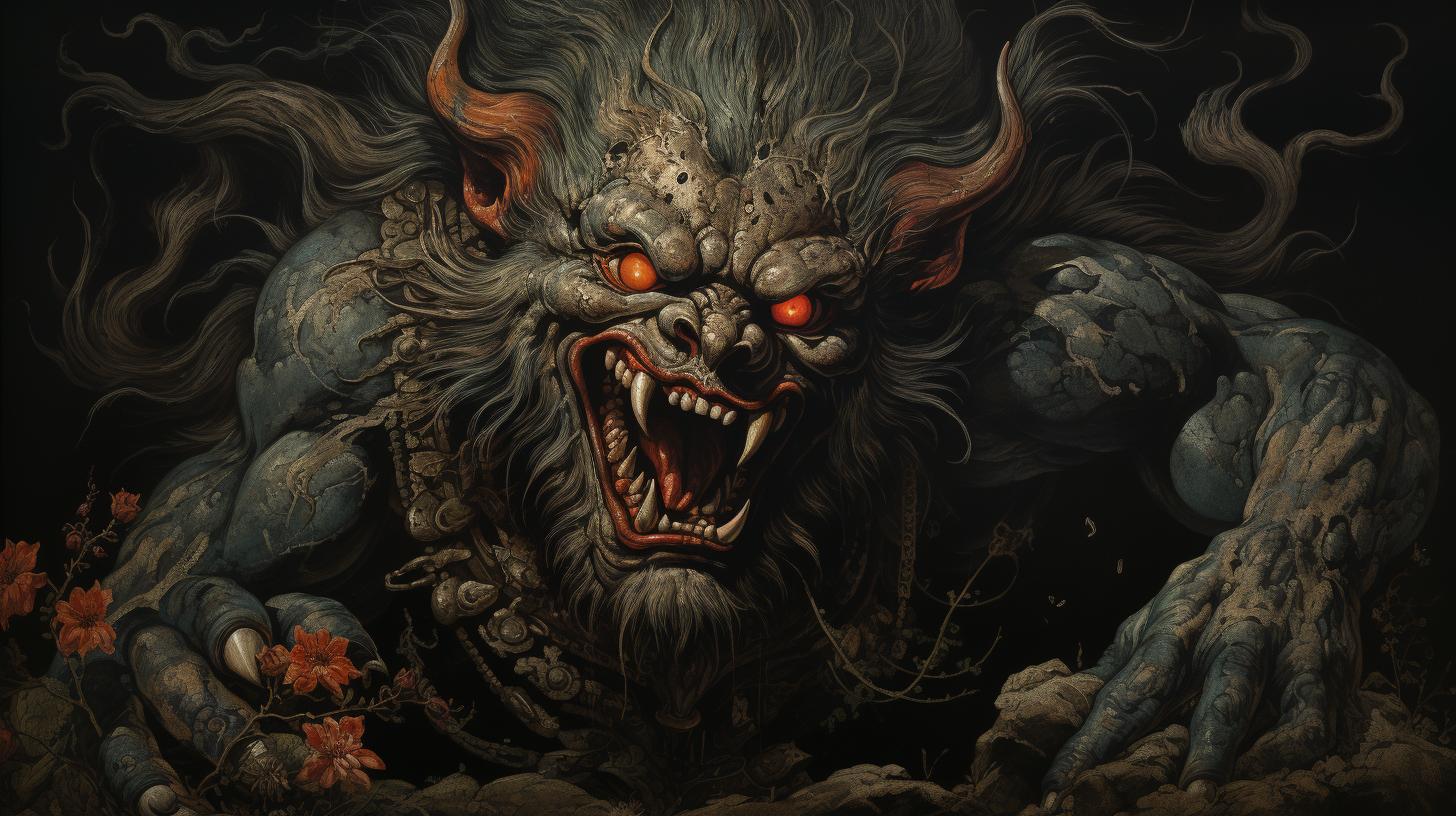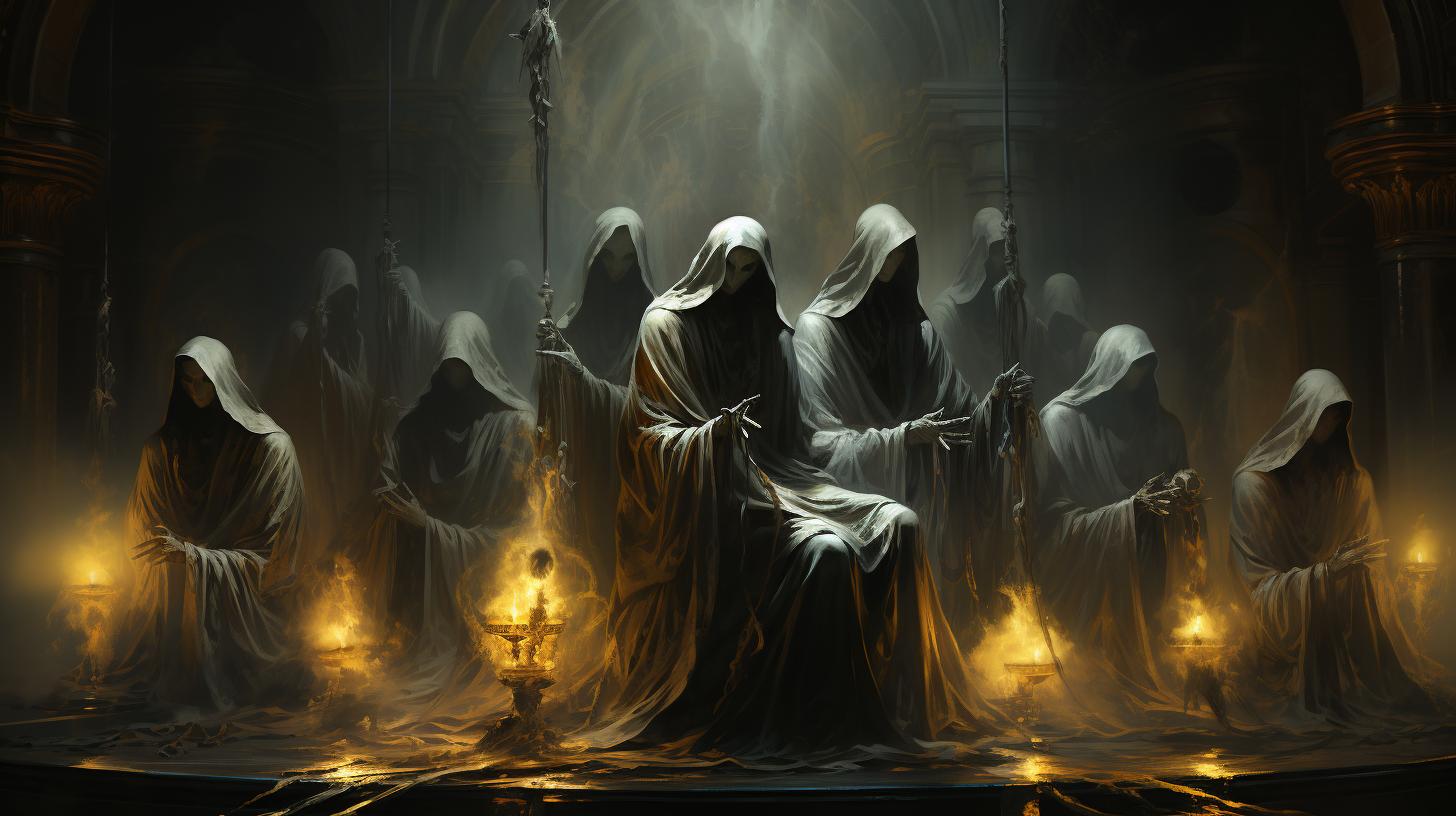Daityas and Danavas: Mythical Demons in Hinduism
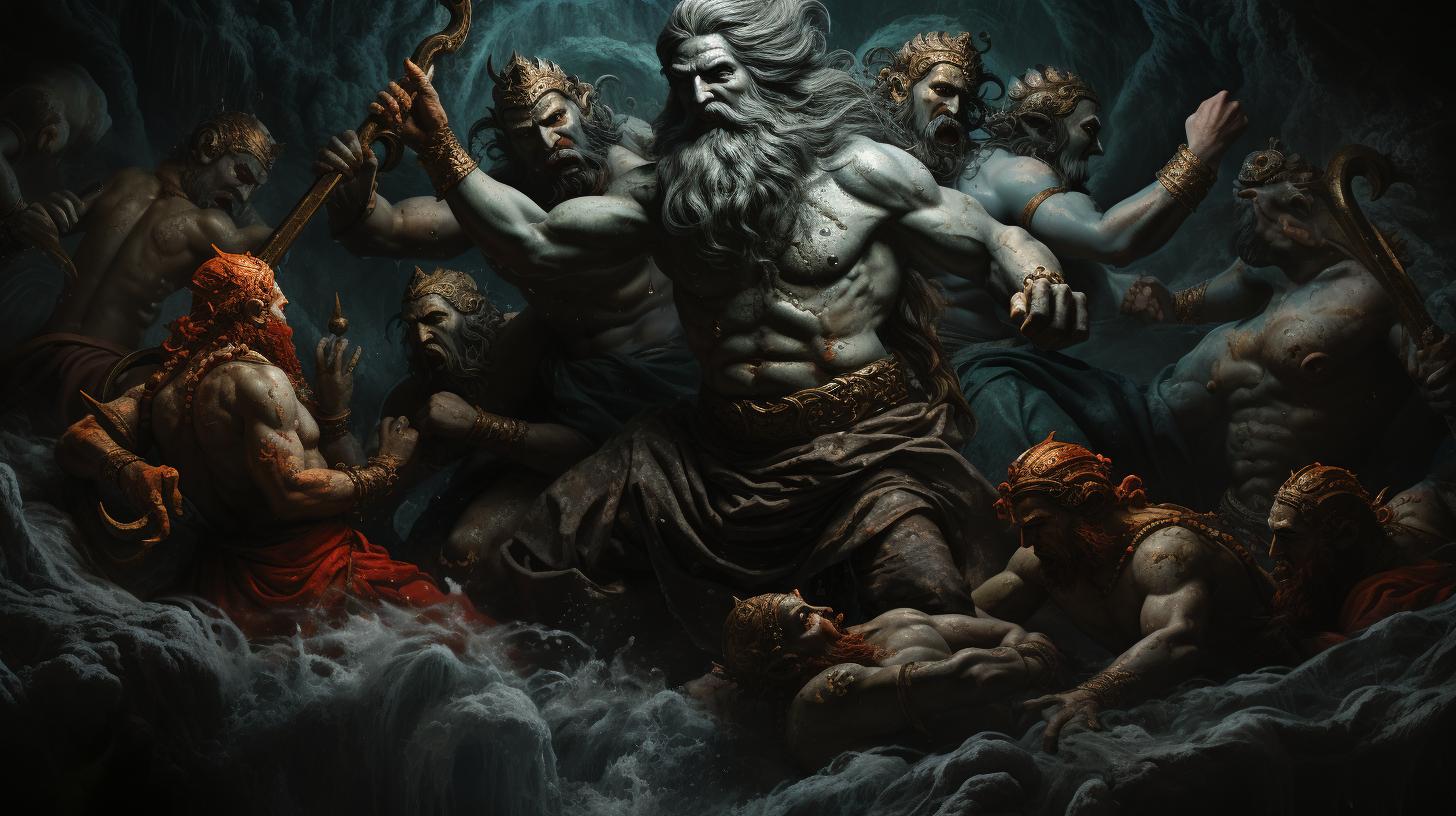
Daityas and Danavas are mythical demon beings in Hindu mythology. Descended from the goddess Diti and the sage Kashyapa, they are known for their malice and power. With supernatural abilities and expertise in black magic, their goal is to overthrow the gods and rule over the three worlds.
They are prominent figures in various Hindu stories and epics, such as the Samudra Manthan (Milkocean Churning) and the battle between Dambhodbhava and Krishna. These demoniac beings hold significant roles and symbolism, exploring themes of good vs. evil, power, and spiritual resistance in Hindu mythology.
Famous Daityas include Hiranyakashipu, while notable Danavas include Rahu, Ketu, and Mahishasura. They have captivated the imagination of people for centuries with their fascinating narratives.
The Origins of Daityas and Danavas
The Daityas and Danavas are powerful demon beings in Hindu mythology, believed to be descendants of the goddess Diti and the sage Kashyapa. According to the mythological lore, Diti and Kashyapa had several children who became the progenitors of these demonic beings.
Descendants of Diti and Kashyapa
Daityas and Danavas trace their lineage back to Diti, who was married to Kashyapa. Diti gave birth to many children, including notable figures like Hiranyakashipu, Sishupala, Virochana, and Bali among others.
These offspring became prominent Daityas and played significant roles in the mythological narratives.
Powers and Abilities of Daityas and Danavas
The Daityas and Danavas are known for their immense power and supernatural abilities. These demoniac beings possess extraordinary strength and are skilled in black magic. They are often portrayed as formidable adversaries of the gods, employing their dark arts to challenge divine authority.
Motives and Goals of the Demoniac Beings
The primary objective of the Daityas and Danavas is to usurp the power of the gods and establish dominion over the three worlds. They harbor deep resentment towards the deities and constantly seek opportunities to subvert their authority.
These malevolent beings are driven by their desire for supremacy and control.
Daityas and Danavas in Hindu Mythology
Daityas and Danavas play prominent roles in Hindu mythology, featuring in various stories and epics that depict their battles and quests for power. These mythical beings are fascinating figures, symbolizing both the conflict between good and evil and the resilience of spiritual forces.
The Story of Samudra Manthan (Milkocean Churning)
One of the most famous episodes involving Daityas and Danavas is the tale of Samudra Manthan, also known as the Milkocean Churning. In this narrative, the gods and demons joined forces to extract the nectar of immortality from the milky ocean.
However, the demons harbored selfish intentions, seeking to claim the nectar exclusively for themselves. The arduous process of churning witnessed numerous battles and significant events, with the Daityas and Danavas playing both supportive and treacherous roles, their true motives hidden beneath their assistance to the gods.
Daityas and Danavas in the Battle between Dambhodbhava and Krishna
Another notable story recounts the fierce battle between the Daitya king Dambhodbhava, under the influence of the demon king Kansa, and the divine deity Krishna. Dambhodbhava fought valiantly against Krishna, but ultimately succumbed to the superior divine power of the deity.
These tales demonstrate the integral presence of Daityas and Danavas in Hindu mythology, influencing the course of events through their actions and highlighting the perpetual struggle between the forces of good and evil.
Their stories serve as a means for imparting moral lessons and exploring themes of power, spirituality, and the delicate balance that exists between opposing forces.
Famous Daityas
- Hiranyakashipu: Known as the Demon King, Hiranyakashipu was a formidable figure and a renowned Daitya. His unyielding pursuit of power and defiance against divine authority made him a legendary character in Hindu mythology.
Well-Known Danavas
- Rahu: A prominent member of the Danava race, Rahu is associated with eclipses in Hindu mythology, representing the celestial shadow that swallows the sun or the moon during these astronomical events.
- Ketu: Another significant Danava, Ketu is associated with the descending lunar node in Vedic astrology, symbolizing both accomplishment and worldly desires.
- Mahishasura: Known as the Buffalo Demon, Mahishasura was a powerful Danava who was ultimately defeated by the goddess Durga, serving as a significant story of triumph over evil.
The Significance of Daityas and Danavas
Daityas and Danavas hold significant roles in Hindu mythology, symbolizing various themes and embodying profound symbolism.
They represent the eternal struggle between good and evil, the dynamics of power, and the concept of spiritual resistance.
Roles and Symbolism in Hindu Mythology
Within Hindu mythology, Daityas and Danavas serve as essential counterparts to the gods, balancing the forces of good and evil. They portray the inherent duality of existence, highlighting the complexity of moral choices and the consequences they entail.
The Daityas, with their fierce nature and relentless pursuits for power, exemplify the darker aspects of human desires and ambitions. They challenge the gods, pushing them to deepen their own sense of righteousness and protect the cosmic order.
On the other hand, the Danavas represent the inner demons that individuals must overcome to achieve enlightenment and self-realization. They embody the obstacles and trials one must face on the path to spiritual growth and transformation.
Themes Explored: Good vs. Evil, Power, and Spiritual Resistance
- Good vs. Evil: The Daityas and Danavas personify the perpetual battle between divine forces and malevolent beings. Their conflicts serve as allegories for the struggle between right and wrong, stressing the importance of staying steadfast in the face of darkness.
- Power: Both groups exhibit immense power and supernatural abilities.
Their quests for power reflect the eternal human longing for dominance and control. The stories of their battles convey the consequences and responsibilities that come with wielding such power.
- Spiritual Resistance: Daityas and Danavas embody the capacity for spiritual resistance and resilience.
They show that even in the face of formidable adversaries, one can remain steadfast in their beliefs and values, ultimately triumphing over adversity.
Through the tales of Daityas and Danavas, Hindu mythology imparts valuable lessons and explores the complexities of human existence.
These mythical beings challenge individuals to confront their own inner demons, make ethical choices, and strive for spiritual growth in a world that constantly tests their resolve.
Overall, the significance of Daityas and Danavas lies in their ability to inspire contemplation and introspection, shedding light on the universal themes of good versus evil, power dynamics, and the enduring quest for spiritual enlightenment.
Famous Daityas and Danavas in Hindu Mythology
Hiranyakashipu: The Demon King
Hiranyakashipu, a prominent Daitya figure in Hindu mythology, was known as the Demon King. He became immensely powerful through rigorous penance and obtained a boon that made him nearly invincible.
Hiranyakashipu’s arrogance and defiance towards the gods made him a formidable adversary. His ultimate nemesis came in the form of Lord Vishnu, who manifested as the half-man, half-lion avatar known as Narasimha. In a fierce battle, Narasimha vanquished Hiranyakashipu and established the triumph of good over evil.
Rahu, Ketu, and Mahishasura: Well-Known Danavas
In Hindu mythology, Rahu and Ketu are two significant Danavas. Rahu is associated with the lunar eclipse, while Ketu is associated with the solar eclipse. They are believed to be responsible for eclipses by swallowing the sun and the moon temporarily.
According to the legend, Rahu and Ketu were once demons who disguised themselves as gods to consume the divine nectar of immortality. However, Lord Vishnu discovered their deceit and beheaded them.
Since then, Rahu and Ketu have become celestial beings associated with astronomical phenomena.
Mahishasura, another well-known Danava, was a powerful buffalo demon. He received a boon from the gods, making him nearly invincible against men. With this newfound power, he unleashed havoc and terrorized the celestial beings.
In response, the goddess Durga, an embodiment of divine feminine energy, fought against Mahishasura for nine days and ultimately slayed him, restoring peace and harmony.
These famous Daityas and Danavas exemplify the captivating and complex characters found in Hindu mythology, showcasing the eternal struggle between good and evil, power dynamics, and the triumph of righteousness.

